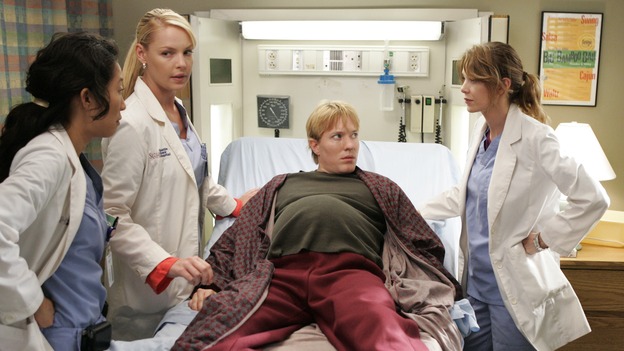
The sterile hum of Seattle Grace Mercy West’s operating rooms usually muffled the everyday dramas playing out within its walls. Here, life hung by a thread, miracles were daily occurrences, and tragedy was a constant, unwelcome guest. But even for a hospital that had seen it all – from bomb-in-a-body cavity to a plane crash on its doorstep – there are cases that cut through the hardened cynicism, cases that make seasoned surgeons pause, their masks unable to hide the visceral jolt of disbelief. The teratoma case was one such seismic event.
It began, as most things do, mundanely enough. A young woman, early twenties, presented with persistent abdominal pain, vague nausea, and a peculiar feeling of fullness. Scans revealed a mass, large but seemingly benign, nestled deep in her pelvis. Dr. Meredith Grey, then an attending general surgeon, and Dr. Maggie Pierce, Chief of Cardio, were on the case, with a small gaggle of eager residents and interns, including Dr. Helm and Dr. Schmitt, shadowing their every move. The initial consensus was a complex ovarian cyst, perhaps a particularly stubborn fibroid. Routine, by Grey’s Anatomy standards.
The OR was a familiar ballet of efficiency: the sharp scent of antiseptic, the rhythmic beep of the heart monitor, the focused hum of the scrub nurses and anesthesiologists. Meredith made the initial incision, deep and clean. Maggie prepped to assist, ready for the routine excision. Then, the silence began. Not the usual tense silence of a complex bypass or a bleeding trauma, but a different kind – a heavy, stunned quiet that descended like a shroud.
As Meredith carefully dissected through the layers, her eyes widened behind her surgical mask. Maggie leaned closer, her breath catching. What they found was not the gelatinous mass of a cyst, nor the dense tissue of a fibroid. It was a chaotic collection of structures, disturbingly familiar, yet utterly out of place. There were strands of coarse, dark hair, glistening with fluid. A cluster of what looked unmistakably like tiny, rudimentary teeth, eerily pearly white against the red tissue. A fragment of bone, perfectly formed yet minuscule. And then, the true horror: a nascent, clouded eye, too small to be functional, but undeniably an eye, with a faint, iridescent iris.
It was a teratoma, of course. A tumor derived from pluripotent cells, capable of forming various types of tissue. Doctors knew they could contain hair, teeth, even rudimentary organs. But to see it, laid bare, in a living patient, was another matter entirely. This wasn't just a collection of cells; it was a grotesque, miniature sculpture, a whispered attempt at life that had gone horribly, beautifully wrong.
Dr. Helm, usually stoic, visibly blanched, swaying slightly. Dr. Schmitt, ever the wide-eyed intern, let out a choked sound, a mixture of awe and revulsion. Even Meredith, who had removed limbs and held beating hearts in her hand, felt a primal recoil. Maggie, ever the scientist, was momentarily paralyzed by the sheer biological improbability. The scrub nurse, typically unflappable, averted her eyes for a moment.
The extraction was performed with an almost reverent quiet. The mass, once removed, lay in the sterile basin, a disturbing mosaic of the human body’s capacity for both perfection and aberration. Its presence in the OR that day wasn't just a medical curiosity; it was a philosophical bomb.
Word, as it always does in Seattle Grace, spread like wildfire. Whispers snaked through the attendings' lounge, the residents' locker room, the interns' cafeteria. Pathologists spent hours poring over the specimen, their normally objective reports tinged with a clinical fascination that bordered on wonder. Dr. Bailey, ever the pragmatist, could only shake her head, muttering about the body’s "damn audacity." Dr. Webber, the hospital's grizzled patriarch, recounted similar cases from his long career, but even he admitted this one had a particular, unsettling vividness.
The teratoma case became a legend whispered among the new interns, a cautionary tale about the unpredictable nature of medicine, and the human body’s inherent strangeness. It reminded them that even in a world of advanced technology and profound knowledge, the fundamental mysteries of life, of what it means to be, remain vast and unknowable. It was a stark, visceral reminder that the human body, in all its fragility and resilience, was also a canvas for the bizarre, a testament to the fact that even after countless years of practice, Seattle Grace Mercy West Hospital could still be stunned into a profound, shared silence. The teratoma case wasn't just a surgical procedure; it was a moment of collective existential pause, a shock that reverberated long after the final stitch was made.
